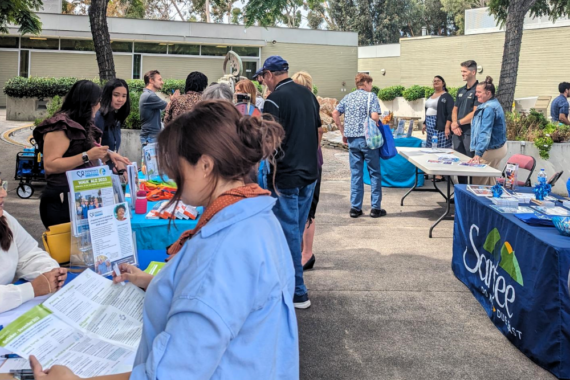Understanding Healthcare Part 1: Hospitals and medical emergencies
April 17, 2023 Community, Public Health
Accessing medical care when you need it can be challenging. It’s important to know what your options are but it can be a confusing system to navigate, especially if English isn’t your first language or if you are using new health insurance. Factors like wait times, policy rules, distance from facilities, costs, and cultural barriers can all affect whether people in need of medical care actually receive proper care.
In the United States, every year, one in five Americans visits an emergency department (ED) at least once, which may result in expensive medical bills for “treat-and-release” conditions that were not life-threatening. This can happen because people aren’t always aware of which healthcare facilities are open and available for them to use. There are also so many types of healthcare facilities ranging from large corporate medical groups to small mobile clinics. Additionally, the stress of illness or injury can make the situation more overwhelming. Many adults understand it’s a good idea to use an ointment with a bandage for a small cut, but if the wound is deeper with persistent bleeding, it’s more complicated to determine if an emergency room or urgent care visit is needed.
Below is Part 1 of our glossary, identifying common types of healthcare facilities, when to use their services, and a list of local resources for people living in East San Diego County.
Hospital
A hospital is for the treatment, both medical and surgical, of the sick and the injured; and for their housing during this process.
Modern hospitals have evolved from being shelters for the needy to being more focused on delivering efficient and effective care to their populations. All hospitals that accept Medicare in the United States are required to have emergency rooms (ERs) as part of their services. Some hospital emergency departments may have just one space with 10 beds, while other mega-hospitals can have emergency departments with multiple floors.
Hospitals near East County with Emergency Rooms (ERs):
Medical Emergencies
If a person or unborn baby could die or be permanently disabled, the situation is considered a life-threatening medical emergency.
What happens when I call 9-1-1?
The police/sheriff, fire department, or ambulance will be contacted by the 9-1-1 dispatcher for immediate help.
You should call 9-1-1 for:
- Choking
- Stopped breathing
- Head injury when passing out, fainting, or confusion
- Injury to neck or spine, particularly if there is a loss of feeling or inability to move
- Electric shock or lightning strike
- Severe burn
- Severe chest pain or pressure
- Seizure that lasted more than 1 minute or from which the person does not rapidly awaken
When should I visit an emergency room (ER) for a medical emergency?
If you’re able, assess the situation. Are you near a hospital? Would you be able to get there quickly? Can I or the individual pay for an ambulance or is there another way I can be transported to a hospital’s emergency room?
Consider these questions, but use your best judgment, and when in doubt, call 9-1-1.
You should go directly to the emergency room/department at a hospital for:
- Trouble breathing
- Passing out, fainting
- Pain in the arm or jaw
- Unusual or bad headache, particularly if it started suddenly
- Suddenly not able to speak, see, walk, or move
- Suddenly weak or drooping on one side of the body
- Dizziness or weakness that does not go away
- Inhaled smoke or poisonous fumes
- Sudden confusion
- Heavy bleeding
- Possible broken bone, loss of movement, particularly if the bone is pushing through the skin
- Deep wound
- Serious burn
- Coughing or throwing up blood
- Severe pain anywhere on the body
- Severe allergic reaction with trouble breathing, swelling, hives
- High fever with headache and stiff neck
- High fever that does not get better with medicine
- Throwing up or loose stools that do not stop
- Seizures
- Poisoning
- Drug/alcohol overdose
- SD County’s Mobile Crisis Response Teams (MCRT) – (1.888.724.7240)
Call this toll-free number available 24/7 if you or another is experiencing a drug or alcohol-related crisis, calling will connect you with a behavioral health expert instead of law enforcement providing in-person support to anyone, anywhere. This Access & Crisis Line is a 988 Suicide & Crisis Line partner. Calls to 988 from a San Diego region zip code will be routed to this team if necessary.
Learn more about our participation in the Advancing Health Literacy program to help provide East County communities with info on when to call 9-1-1.
READ NEXT | Part 2: Clinics
Any questions or comments? Contact us here.




